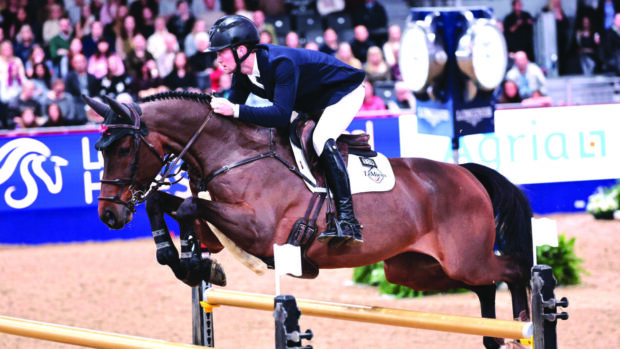He’s been judging for years, but this is the first time Rodger James will assess the Blue Chip British Show Pony Society (BSPS) Heritage mountain and moorland championship at Olympia.
Taking place on Monday 21 December, it is the pinnacle of excellence to which most native competitors aspire.
Here Rodger reveals what he is looking for, critical mistakes he hates to see and why keeping up with a fast-moving schedule can be overwhelming for some riders.
Q. How long have you been judging and on which panels?
A. I have been a Dales Pony Society judge for over 20 years. I’m a longstanding member of the national pony society on the M&M – including working hunter pony – panels and more recently I was invited onto the New Forest, BSPS Heritage and Ponies (UK) panels.
I also steward at lots of shows – including for the Shetland Pony Performance, Connemara Pony Society, New Forest plus Dales/Fell/Highland shows – and I find this most enjoyable; I also think we can always learn and stewarding for others allows this opportunity.
Q. Why do you think native ponies are so popular now?
A. I think the main reason is that young riders don’t have a ‘fixed term’ with them, plus the range of ponies across the breeds gives scope to children and adults alike.
Continued below…

20 signs you’re an incurable showing addict
Q. Have you judged at Olympia before?
A. No, although I’ve had ponies competing there and I have also stewarded back of house.
Q. What do you see as the principal challenge(s) facing competitors at Olympia?
A. There are many challenges facing them – including keeping the ponies’ coats and extending their season. The atmosphere behind the scenes is electric and quite pressurised as timing is paramount; this in itself is a huge thing for Olympia first-timers – others at least will know what to expect.
Q. What do you like to see in the ride/performance?
A. First impressions are important. I like to see a good walk with the pony tracking up, and a balanced rhythmical trot going within the individual breed standard; I don’t like to see any of them being forced. I am always mindful of what a pony was bred for – particularly when seeing it in canter. I like a pony with exuberance and quality and the ‘must’ for me is a pony going within its breed standard.
Q. What will cost marks?
A. Bad manners from ponies and people; a pony’s way of going which doesn’t meet its individual breed standard; poor transitions and exhibitors who don’t make the most of the ring in their individual show.
Q. What do you feel is the one standout ‘must-have’ in this class for you?
A. For me a pony should have the “wow factor” – and go within its breed standard.
Q. Do you have any tips for the riders?
A. Jockeys should appreciate the strengths of their pony and use these to their best advantage. Then, just show your pony and enjoy the moment – qualifying to compete at Olympia is an achievement in itself.
Q. What is your background, Rodger?
A. I was brought up on a farm where working horses played an integral part, and I earned my pocket money working part time on a point-to-point yard – it was hard work, but it was enjoyable and a good learning curve.
I got back into ponies when my two children started riding and competing and, after having had several part-breds, we bought our first pure-bred native – a Welsh Section D. Our first Dales pony was Lucy of Hoye, a true all-round pony, and she got us hooked on the breed.
Q. What you would be best known for?
A. Some of our most successful Dales ponies were Abdylane Nancy, who went to Olympia four times and was best of breed once; Dartdale Peter Boy who, like Nancy, qualified from the breed show – a major feat in itself – and several home-bred Penmire ponies who have not only excelled in the show ring but also competed in dressage, long distance riding and concours.
I also enjoyed great success with Nancy and Peter in-hand at county level and we broke both of them – plus others – to harness. We enjoyed competing, culminating at the British Driving Society championships at Smiths Lawn, Windsor. Although we’ve only had a limited involvement with plaited ponies, Chasecroft Tip Top, a 138cm pony we bred, was placed in his show pony class at HOYS this year.
Olympia: the judging format
The judging format is unique. Each competitor’s performance marks are displayed on a screen above the arena, but their conformation score is kept secret until the afternoon finale. This leads to huge suspense before the champion is announced. The conformation judges are Len Bigley and Henrietta Knight.
Tomorrow: Top tips from Len Bigley





